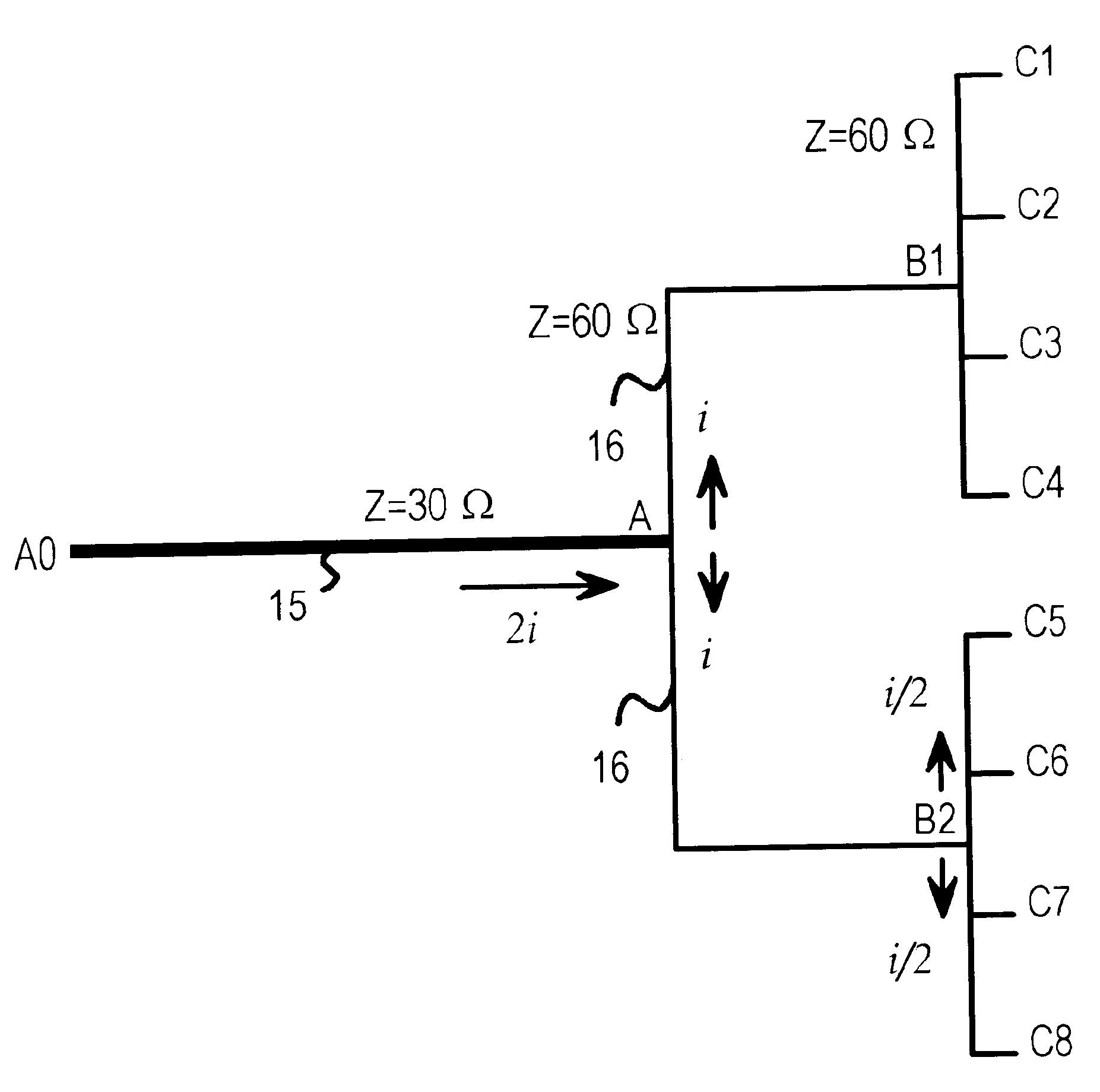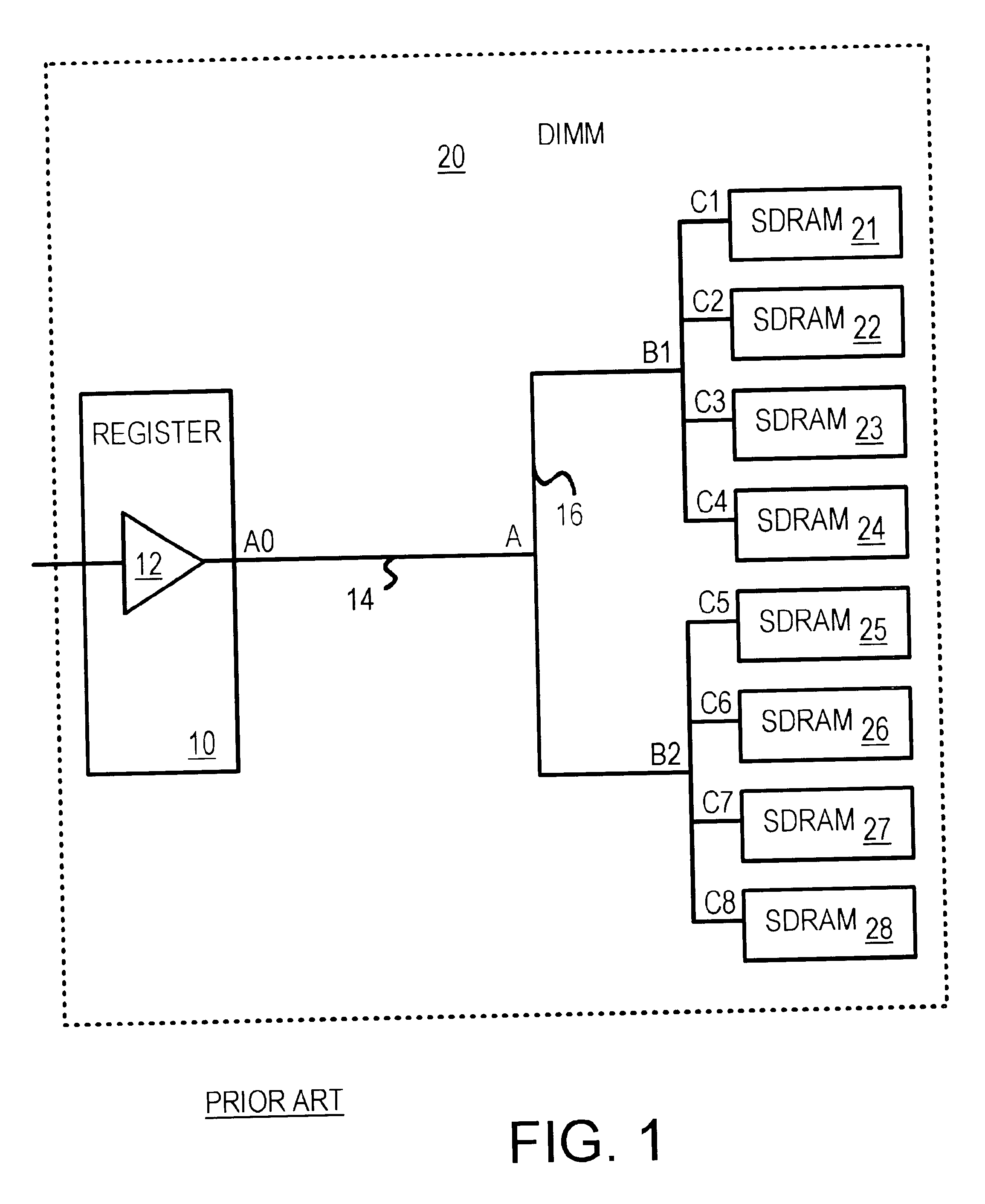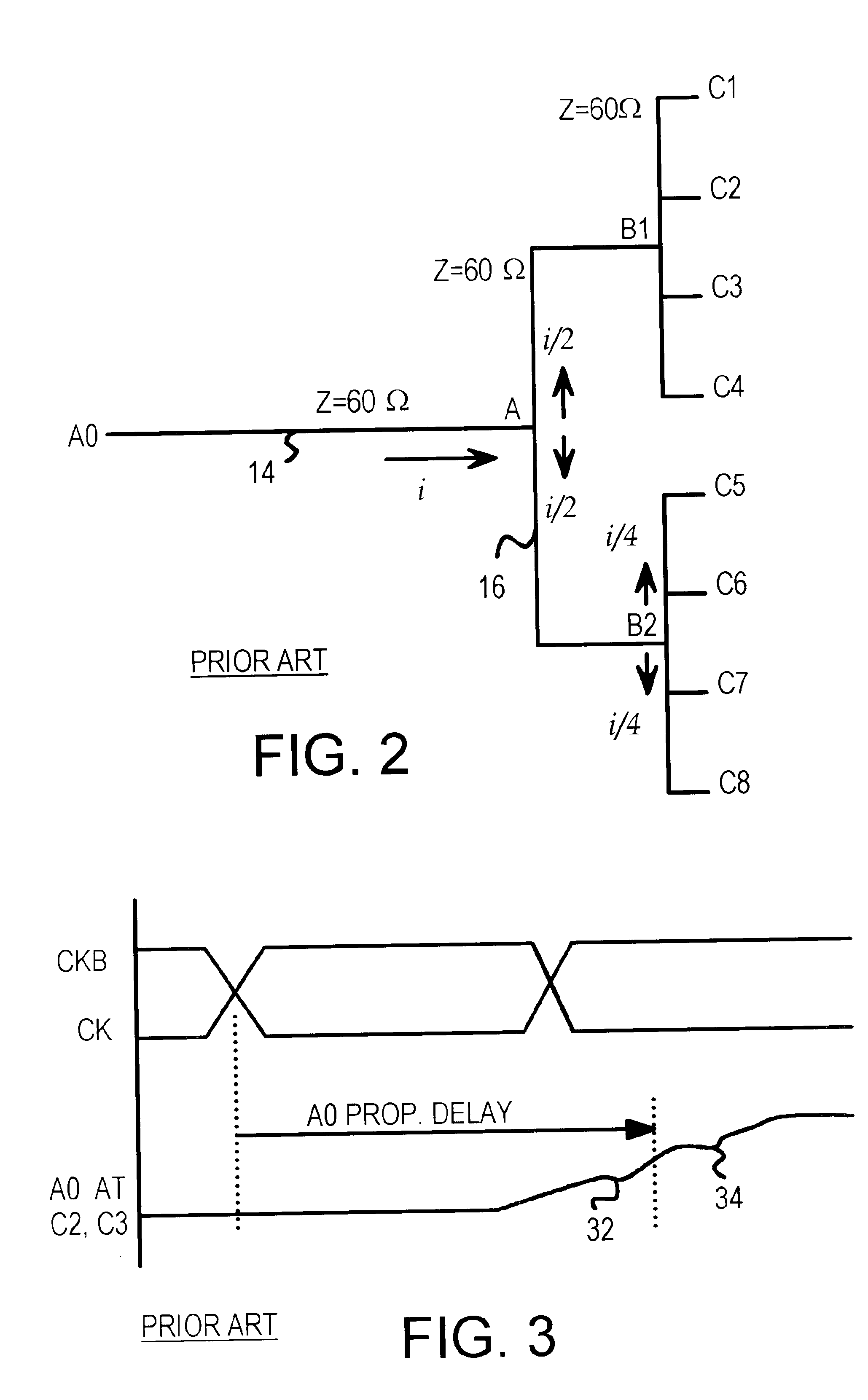Trace-impedance matching at junctions of multi-load signal traces to eliminate termination
a signal traces and trace impedance matching technology, applied in the field of memory modules, can solve the problems of large capacitance load on the inputs of memory modules, large dram-input capacitance, input-capacitance problems,
- Summary
- Abstract
- Description
- Claims
- Application Information
AI Technical Summary
Problems solved by technology
Method used
Image
Examples
Embodiment Construction
[0040]The present invention relates to an improvement in trace impedance-matching. The following description is presented to enable one of ordinary skill in the art to make and use the invention as provided in the context of a particular application and its requirements. Various modifications to the preferred embodiment will be apparent to those with skill in the art, an the general principles defined herein may be applied to other embodiments. Therefore, the present invention is not intended to be limited to the particular embodiments shown and described, but is to be accorded the widest scope consistent with the principles and novel features herein disclosed.
[0041]FIG. 5 shows impedance matching at a 3-way junction. An incoming signal, such as address A0 from output of register on a DIMM, drives line 14. At junction A, input line 14 splits into three branches (lines 16) to secondary junctions B1, B2, B3. Each of the 3 lines 16 reaches an input B1, B3, B2 of DRAM chips 21, 22, 23, ...
PUM
 Login to View More
Login to View More Abstract
Description
Claims
Application Information
 Login to View More
Login to View More - R&D
- Intellectual Property
- Life Sciences
- Materials
- Tech Scout
- Unparalleled Data Quality
- Higher Quality Content
- 60% Fewer Hallucinations
Browse by: Latest US Patents, China's latest patents, Technical Efficacy Thesaurus, Application Domain, Technology Topic, Popular Technical Reports.
© 2025 PatSnap. All rights reserved.Legal|Privacy policy|Modern Slavery Act Transparency Statement|Sitemap|About US| Contact US: help@patsnap.com



